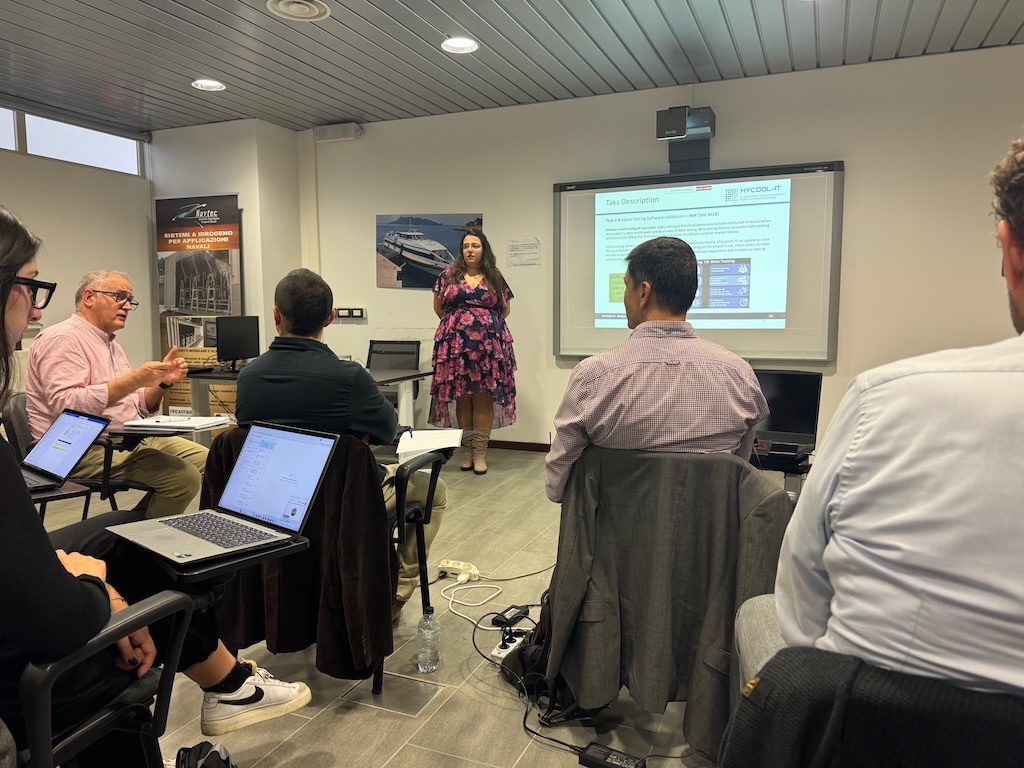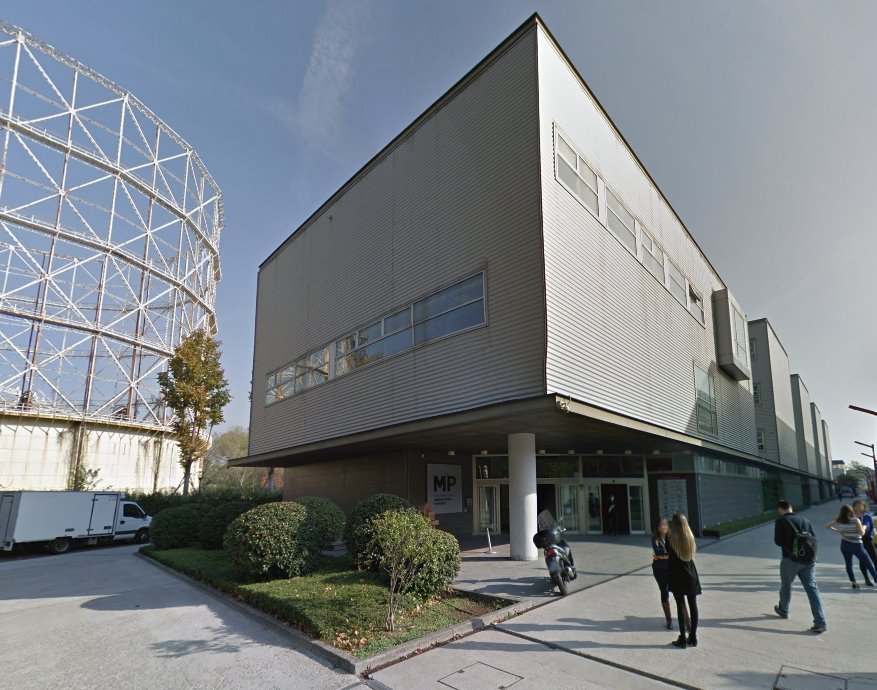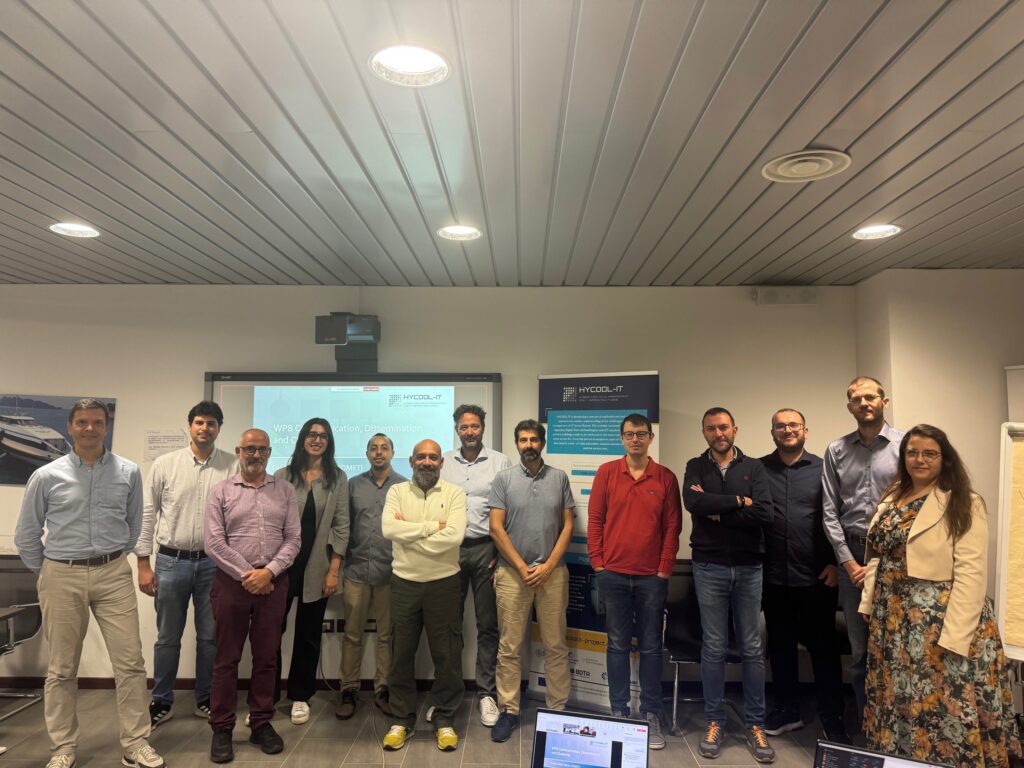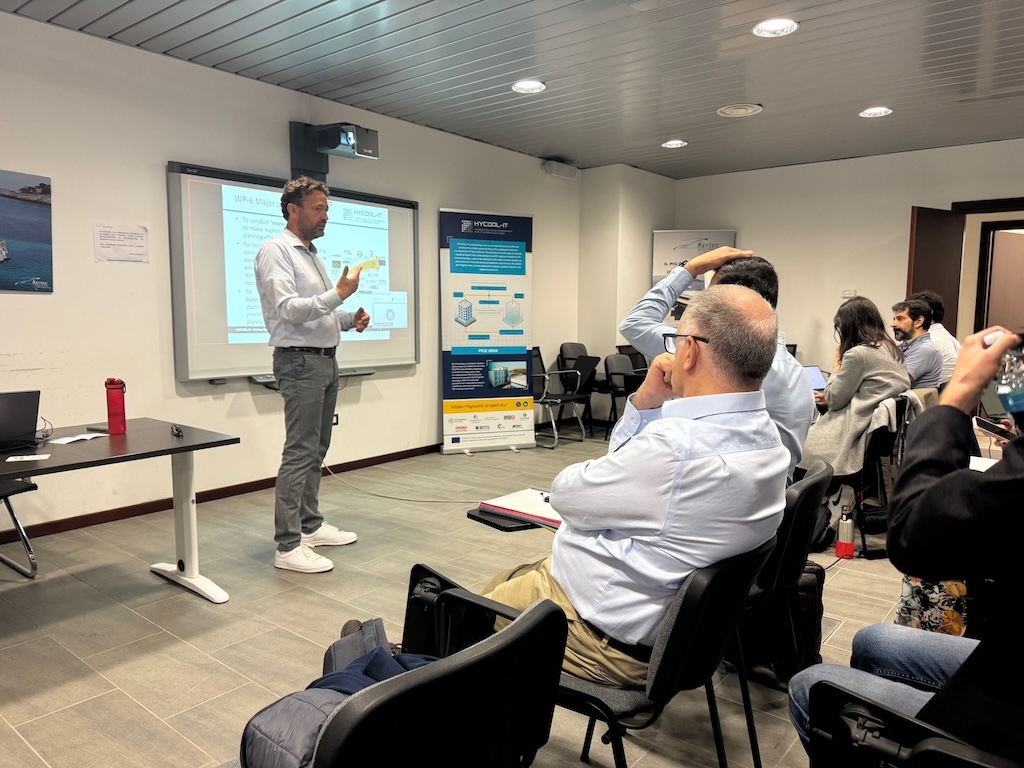Last Tuesday and Wednesday we gathered in the town of Messina at CNR ITAE Centro Prove premises to discuss advances in the project and plan immediate actions for the next six months. The design and implementation strategy is been defined according to new efficiency standards for ICT server rooms (including the most recommended server room design options to improve energy efficiency and the waste heat reutilization), most recent procurement guidelines and the innovative DTwin approach developed in HYCOOL-IT. The strategy will tackle processes and requirements extracted from exemplary use cases and will contribute to Innovative engineering guidelines for ICT server’s room. Criteria for public procurement will also be set, including best practices for cooling and monitoring of operating conditions, connection to a district heating system and the reuse of a relevant share of the waste heat and highest reuse of waste heat, cooling plants using refrigerants with a lower GWP, designed and monitored PUE and ERF (Energy Reuse Factor).

We are currently finishing the technical aspects of defining the final configuration of the demonstrator at POLIMI Bovisa Campus by choosing the precise ways and positions to install each piece of equipment and how each single element will be connected and interact with one another to function as an effectively integrated system. To facilitate the installation of the innovative solutions planned, any activity preliminary to the system installation (relevant compliance, legal works, preparatory construction works, preparation of piping and electrical connection) will be planned and carried out in the next months. Taking advantage of the preparation activities, the innovative technologies are expected to be timely implemented at the demo site. After the construction phase, there will also be a period of monitoring, in which actual data can be gathered thanks to the BDTE PaaS tools and compared against planned results. This period of monitoring will be key for an extensive commissioning of the system and all its individual parts.

The goal of the project is to design a system that can recover the heat produced by the servers to heat the BL26 building. The heat recovery system involves the installation of a heat exchanger in the outside plant area of Z3 and a heat pump on the roof of BL26 building. The primary side of the heat exchanger will be connected to Z3 cooling system while the secondary side will be connected to the heat pump of BL26 heating system. New chillers are selected, paying proper attention to the correct sizing in relation to the load, to the efficiency of the cooling system and to the compressor technology.
Considering the current server farm load, the old chillers are oversized. Hence, new correctly sized chillers (Schneider Uniflair TSAF2642A1 Ultra-Quiet version) are selected to manage the Z3 cooling demand.

We advanced also on planning market watch activities to make exploitation and replication planning effective. We are continuously cooperating among the consortium partners to identify and curate project’s exploitable results, ensure IPR is correctly managed and stimulate joint and collective opportunities. Another action to further complete is the identification and documentation of clear business models and business cases starting from the pilot activities, thus providing the basis for replication planning.
We know now that Digital Twins are becoming Integral in DCIM: The integration of digital twins with Data Centre Infrastructure Management (DCIM) systems is becoming a common trend. Interoperability and Standardization Are Key Selling Points: Data centres and IT facilities are increasingly looking for interoperable solutions that can integrate with existing DCIM and building management systems (BMS). With all this in mind in the next months we need to identify early replication opportunities by checking market opportunities and prepare an overall replication strategy for Hycool-IT.

Thanks very much to our host for a very productive meeting with very interesting discussions on the technical solutions, on reflections about prospective users needs and loads of ideas on simulation.
